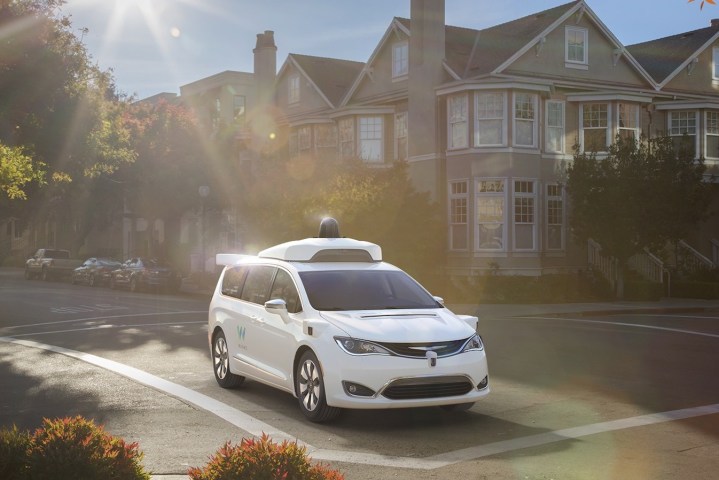Google’s autonomous driving company Waymo will soon make its official debut as a full-scale service on public streets. Arizona gave Waymo transportation network company (TNC) status on January 24, following the company’s application on January 12, Quartz reported. The application contained photos of the self-driving Chrysler Pacifica minivans Waymo will be operating in five states. The company is assembling a fleet consisting of thousands of these vehicles.
Waymo has been testing in Arizona since April, where select Phoenix residents were given 24/7 access to the taxi service for free. The fleet is composed of Pacifica Hybrid models, which are actually plug-in hybrids that have an all-electric range of 33 miles. At first there were engineers in the driver’s seats, but starting in November the hailed vehicles were driverless.
With its new TNC status, Waymo can start charging riders for its service, which will be accessed from a computer or an app. This could spell trouble for Uber, a company with serious self-driving aspirations of its own, and Lyft. This came prominently to light when Waymo filed a massive lawsuit against its rival. It accused Uber of stealing intellectual property relating to self-driving technology.
The conflict lasted over a year, and ended with the order for Uber to give Waymo a 0.34-percent equity stake in the company. At an estimated $72 billion value, Waymo’s settlement is worth close to a quarter of a billion dollars. Learn everything there is to know about the Waymo vs. Uber trial in our roundup.
Waymo plans to extend its service to other cities, and its TNC permit goes a long way towards this endeavor.
“As we continue to test drive our fleet of vehicles in greater Phoenix, we’re taking all the steps necessary to launch our commercial service this year,” a Waymo spokesman said in an emailed statement, Quartz reported. The rates to use the service have not yet been disclosed, though they should be competitive with Uber and Lyft.
Waymo’s cars have driven over 4 million self-driven miles since it began as a Google project in 2009. In a Medium post, the company states it also has 2.5 billion virtual miles under its belt, stemming from 25,000 virtual self-driving cars being run in a simulation.
Editors' Recommendations
- Waymo robotaxi attacked and set on fire in San Francisco
- Waymo expands robotaxi service area in San Francisco
- Robotaxi firm Cruise ordered to halve fleet following incidents
- Waymo taps the brakes on its autonomous-trucking project
- Waymo’s robotaxis are coming to Uber’s ridesharing app



